What Happens NX? #3 - Launch
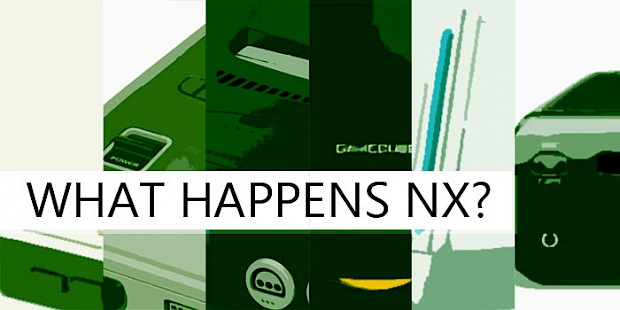
Posted 24 Apr 2016 at 13:52 by Ashley Jones
Welcome back to another instalment of ‘What Happens NX?’ where we look at Nintendo’s past to consider what might come in the future. We’ve previously looked at third parties and what impact they might have and speculated on what the controller may be like. Now we turn our attention to the release itself.
Obviously we don’t know when the NX will release, although a lot of speculation suggests it will be the end of this year (presumably calendar, not financial). It would be foolish to miss out on the busy Christmas period, a mistake Sony learnt with the PS3 in Europe, but if the console isn't ready it simply won't be possible. However, there's more to a release than just the date - from advertising to games it all plays its part. This article will try and cover all these different aspects.
The last few generations have replaced “launch day” with “launch period”, which tends to mean the six months following the launch day. Whether this is a shift in outlook or a PR stunt to take attention away from a weak launch day depends on how cynical you are. This article shall be referring to launch day unless stated otherwise.
Release date
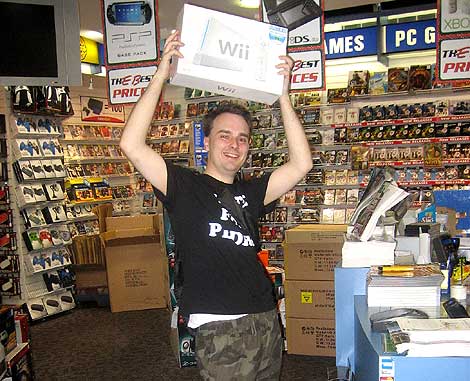
Promotional events, midnight queues, advertising campaigns...the release of a new console draws a lot of attention. Console manufacturers make a big deal about the first person in each region to get one after having queued up until the shop opens at midnight with box-thrusting photos the closest gaming gets to a money shot.
Typically releases start in Japan and eventually make their way to North America and Europe. As consoles have gone by the release dates tend to be closer together, which is a big change from waiting years like we have had to do before in Europe. Looking at the release dates of all of Nintendo’s home and handheld consoles we can see some interesting patterns emerge.
Console | Japan Launch | NA Launch | EU Launch | JP/NA Delay | JP/EU Delay | NA/EU Delay |
|---|---|---|---|---|---|---|
NES | 15/07/1983 | 18/10/1985 | 01/09/1986 | 826 | 1144 | 318 |
SNES | 21/11/1990 | 23/08/1991 | 06/06/1992* | 275 | 563 | 288 |
N64 | 23/06/1996 | 29/09/1996 | 01/03/1997 | 98 | 251 | 153 |
GameCube | 14/09/2001 | 18/11/2001 | 03/05/2002 | 65 | 231 | 166 |
Wii | 02/12/2006 | 19/11/2006 | 08/12/2006 | -13 | 6 | 19 |
Wii U | 08/12/2012 | 18/11/2012 | 30/11/2012 | -20 | -8 | 12 |
Game Boy | 21/04/1989 | 31/07/1989 | 28/09/1990 | 101 | 525 | 424 |
Game Boy Color | 21/10/1998 | 18/11/1998 | 23/11/1998 | 28 | 33 | 5 |
Game Boy Advance | 21/03/2001 | 11/06/2001 | 22/06/2001 | 82 | 93 | 11 |
DS | 02/12/2004 | 21/11/2004 | 11/03/2005 | 0 | 110 | 110 |
3DS | 26/02/2011 | 27/03/2011 | 25/03/2011 | 29 | 27 | -2 |
Figure 1
*The SNES launched in the UK on 11th April 1992 but we have taken the EU launch date for consistency.
While Japanese gamers do typically get their hands on new consoles first, Nintendo has shown it is not afraid to mix things up in order to chase certain sales periods. The Wii and Wii U both launched in America before Japan in order to be in store for Black Friday, where Americans full of leftover turkey from Thanksgiving decide to act like a frenzied swarm in search of discounts and Christmas gifts. Last year they spent over $10 billion on Black Friday according to CNBC so it is no wonder Nintendo is keen to get their consoles on stores at this time. Even if they don't sell particularly well at this point due to the focus being on discounts, the mere presence and visibility is important.
Of course not long after this is Christmas and while not celebrated as a religious holiday in Japan (although they do eat a different kind of bird to celebrate) it is still a big spending period and a market Nintendo tries to hit, particularly when it comes to their home consoles. Europe also tends to get consoles around this time, but looking at the release dates above it is clear it is not always a priority (or practical) to do so. But we Europeans are used to waiting for video games, right?
Launch price
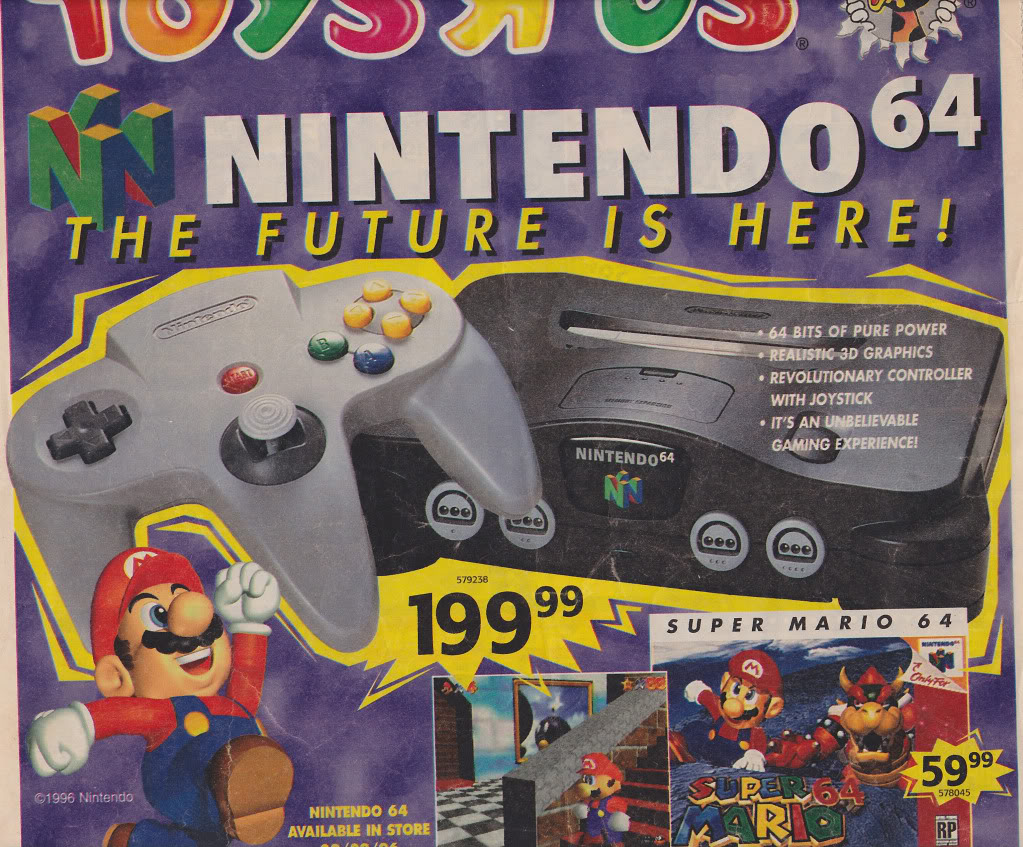 Launch price can be a key deciding factor for many people on the fence or a source of pain or relief for parents depending on the outcome. After all, it’s all about the Benjamins.
Launch price can be a key deciding factor for many people on the fence or a source of pain or relief for parents depending on the outcome. After all, it’s all about the Benjamins.
Below is an analysis of launch prices for all the consoles. There are a few key points worth highlighting first however:
Prices listed are the prices at release and have not been adjusted for inflation
This obviously affects comparing generations, but even within early generations (where regional releases were years apart) it could also affect comparisons
Prices in Europe are using UK Pounds, simply because the Euro was introduced in 1999 and this was the most consistent currency to use, but console prices within Europe do vary as well
Prices have been rounded to the nearest multiple of 10 except in the case of some Japanese prices which were rounded up by 20 (as the price was something like 14,980).
The NES price is the Basic set with the Super Mario Bros pack-in
The Wii U price is the Premium version
European Wii U and 3DS prices are the average prices set by retailers as Nintendo no longer produces RRPs for Europe
Console | Japan (¥) | North America ($) | Europe (£) |
|---|---|---|---|
NES | 14,800 | 100 | 100 |
SNES | 25,000 | 200 | 150 |
N64 | 25,000 | 200 | 250 |
GameCube | 25,000 | 200 | 130 |
Wii | 25,000 | 250 | 180 |
Wii U | 31,500 | 350 | 300 |
Game Boy | 12,800 | 90 | 70 |
Game Boy Color | 8,900 | 80 | 80 |
Game Boy Advance | 9,800 | 150 | 100 |
DS | 15,000 | 150 | 100 |
3DS | 25,000 | 250 | 230 |
Figure 2
It is clear Nintendo of Japan are not really creative when it comes to pricing their home consoles! Their pricing has been consistent within Japan up until the launch of the Wii U. Elsewhere we've seen a consistent gentle rise across generations in North America, while Europe has had a bit of up and down for home consoles (more on that later). All regions have seen a gradual price increase for handheld consoles since the Game Boy Color.
Looking at the difference in prices between each generation, it is clear that not all regions are treated equally:
Console | Japan | NA | Europe |
|---|---|---|---|
NES | N/A | N/A | N/A |
SNES | 10,200 | 100 | 50 |
N64 | 0 | 0 | 100 |
GameCube | 0 | 0 | -120 |
Wii | 0 | 50 | 50 |
Wii U | 6,500 | 100 | 120 |
Game Boy | N/A | N/A | N/A |
Game Boy Color | -3,900 | -10 | 10 |
Game Boy Advance | 900 | 70 | 20 |
DS | 5,200 | 0 | 0 |
3DS | 10,000 | 100 | 130 |
Figure 3
While it looks like Europe got a great deal with the GameCube, we were actually screwed over when it came to the N64. It cost $200 in North America when it came out and £250 in the UK. Inflated for today’s prices and that is $296 in North America (based on the 1997 price as that’s the UK launch, although the North American launch was in 1996) and £422.50 in the UK. Obviously other factors play into this (such as different tax rates), but it’s clear there was a significant price difference between North America and the UK, one which is thankfully becoming less common nowadays.
It is worth noting that the N64 price was cut two months after launch by £100 in the UK (and $50 around the same time in North America) while the GameCube had a price cut before launch, shaving £21 off its original price to remain competitive in the fact of the Xbox. It would be nice if we could pick up another new Nintendo console for under £150, but it is wishful thinking at this stage.
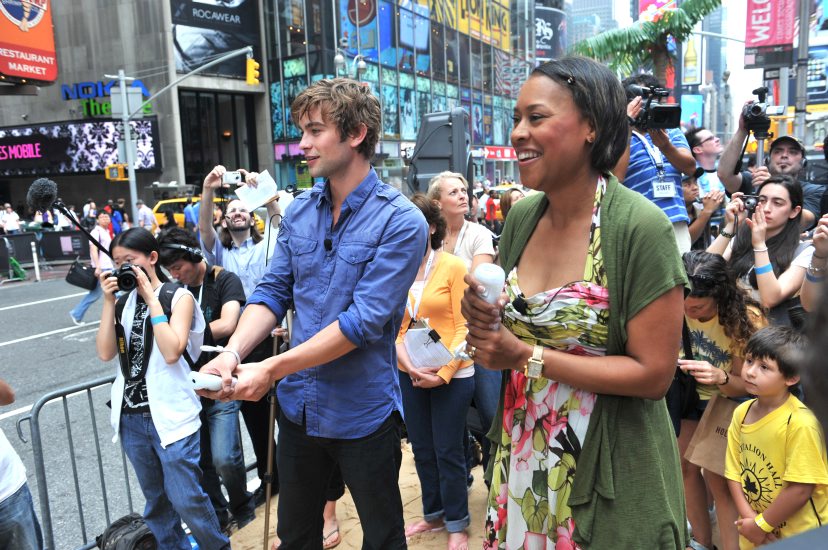
Launch Games
Launch games typically fall into three categories; genuinely great games you’d continue playing, games that people pick up due to lack of options and just bad games. As the generations have come and gone the number of games released with each console has thankfully increased, but obviously they're not all amazing games. The table below shows the total number of games released on launch day in each region and then split by 1st and 3rd party.
In this instance 1st party is classed as a title developed by Nintendo themselves, rather than published by them (as they helped publish a number of 3rd party developed titles). In the case of the Nintendo 3DS Nintendogs + cats is classed as one game, even though there were 3 SKUs released.
Console | Japan | Japan 1st Party | Japan 3rd Party | North America | NA 1st Party | NA 3rd Party | Europe | EU 1st Party | EU 3rd Party |
|---|---|---|---|---|---|---|---|---|---|
NES | 3 | 3 | 0 | 17 | 17 | 0 | 9 | 9 | 0 |
SNES | 2 | 2 | 0 | 5 | 4 | 1 | 3 | 3 | 0 |
N64 | 3 | 2 | 1 | 2 | 2 | 0 | 6 | 3 | 3 |
GameCube | 3 | 2 | 1 | 10 | 2 | 8 | 21 | 2 | 19 |
Wii | 16 | 4 | 12 | 21 | 3 | 18 | 19 | 3 | 16 |
Wii U | 11 | 2 | 9 | 34 | 3 | 31 | 30 | 2 | 28 |
Game Boy | 4 | 4 | 0 | 5 | 5 | 0 | 4 | 4 | 0 |
Game Boy Color | 4 | 2 | 2 | 4 | 2 | 2 | 2 | 0 | 2 |
Game Boy Advance | 24 | 1 | 23 | 16 | 1 | 15 | 14 | 2 | 12 |
DS | 12 | 3 | 9 | 7 | 2 | 5 | 17 | 4 | 13 |
3DS | 8 | 1 | 7 | 15 | 3 | 12 | 14 | 2 | 12 |
Figure 4
Speaking generally the number of titles have gone up with each console that has been released, although there are clear exceptions with the handhelds in Japan which peaked with the GBA and the Wii U, which took a small dive in Japan but grew in other territories. This may well be because of the shrinking console market in Japan as Japanese developers turn to mobile.
Figure 5
Looking at the 1st party offerings North America and Europe typically fare better. Other than a few exceptions, these territories come after Japan resulting in us getting a few titles that came later in Japan. It is not however always the case as there are exceptions such as WarioWare: Touched which came out at launch in Japan but not in other regions (although it did come out in North America on Valentine’s Day so maybe Nintendo wanted everyone to have Wario for Valentine's Day).
It is also clear that Nintendo’s push to get the NES on the North American market has never equally matched since in terms of 1st party titles, owing to the fact they had proved themselves a worthy competitor in the face of scepticism following the video game crash of 1983. As the NES launched two years after it did in Japan it also benefited from a large back catalogue of games for Nintendo to release alongside the console.
Figure 6
Meanwhile looking at 3rd parties there has been a clear increase as generations have gone by. It is to be expected that the NES and Game Boy would not receive 3rd party games at launch as they were unknown entities but subsequently Nintendo has proven themselves and 3rd party developers are releasing more and more games. It’s also interesting comparing the home and handheld consoles; the former has seen a steady increase as time has gone by whereas the handheld consoles jumped much more quickly but have subsequently stabilised.
Figure 7
As I discussed in the first instalment which looked at 3rd parties, their support has remained pretty stable with each generation and it is clear that when it comes to launch titles they are supplying a healthy amount.
On the next page we look at advertising and Nintendo's competitors.
Advertising
Advertising and marketing is obviously an important part of a console launch. Nintendo learnt this the hard way with the Wii U as it suffered at the hands of poor/unclear marketing, with some people today still believing it is a Wii add-on. They also unfortunately suffered negative press around the launch of the Nintendo 3DS about the possible damage the 3D stereoscopic visuals could cause to children and in spite of Nintendo stating that the 3D was optional and should not be used by children under 7, it certainly had an impact on public perception at the time.
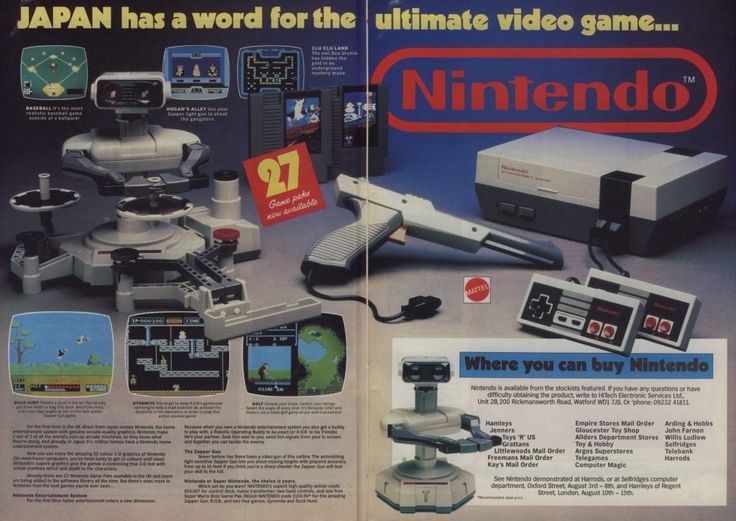 The Nintendo 3DS also suffered a problem Virtual Reality is currently facing - how do you advertise something that is innately 3D and immersive through traditionally flat media? Nintendo typically tours their new console around the country before launch and obviously the Nintendo 3DS was no different, but to really grasp the potential you do need to see it first hand and this may explain why the console had a relatively slow burn launch. Equally, the early-life price drop may have played its role too!
The Nintendo 3DS also suffered a problem Virtual Reality is currently facing - how do you advertise something that is innately 3D and immersive through traditionally flat media? Nintendo typically tours their new console around the country before launch and obviously the Nintendo 3DS was no different, but to really grasp the potential you do need to see it first hand and this may explain why the console had a relatively slow burn launch. Equally, the early-life price drop may have played its role too!
Slogans give an interesting insight into how Nintendo (or the people they pay to come up with them) view the consoles they are selling and the perception they want the public to have. Nintendo’s early slogans were all based on the NES’ “Now you’re playing with power!”, just slotting in “portable” or “super” for the Game Boy and SNES respectively.
With the N64 they started shaking things up, using both “Change the System” and “Get N or Get Out” which was fairly to-the-point (presumably a reference to Sony’s PlayStation), and the GameCube appealed to an increasingly older demographic that have been with them for years - “Born to Play”. The Wii opened up gaming to new audiences and had a slogan that matched this idea - “Wii Would Like to Play”. The Wii U continued the tortured puns with “How will U play next?” in the UK, interestingly in North America it was the more declarative “How U will play next”. The less said about the DS’ creepy “Touching is Good” the better and I am really not sure how we’re supposed to interpret the 3DS’ “Take a Look Inside”.
For no reason other than ‘the sake of it’, below is a collection of launch adverts that I could find. Where possible I have tried to find an advert that is classed as a launch advert (either explicitly within the advert or judging from the YouTube video name) but if I have been unable to do so I have just found an old advert for the console or one of its game. There might be times where the UK adverts are actually American ones, but hey it’s just a bit of fun right? Obviously the earlier ones are of bad quality, but it’s a nice trip through a history of bad haircuts and questionable campaigns.
Console | Japan | North America | UK |
|---|---|---|---|
NES | |||
SNES | |||
N64 | |||
GameCube | |||
Wii | |||
Wii U | |||
Game Boy | |||
Game Boy Color | |||
Game Boy Advance | |||
DS | |||
3DS |
Figure 8
Two things are quite clear - the 90s was an awful decade and Japan sure knows how to do an advert. As the years have gone by Nintendo has moved to a more inclusive and wide-range of demographics in their adverts (which is true of not just Nintendo or the video game industry). One of the clearest contrasts is between the GameCube and Wii. The former finishes with a topless guy in his teens/early 20s playing alone in his room, whereas the Wii advertising campaign was all about families and friends getting together. The post-launch advertising campaign reinforced this point as families and celebrities were seem in impeccably white rooms playing the Wii (and DS) happily together.
The UK Game Boy advert contained a shot of a woman’s pants filled with cartridges for no reason and by and large that kind of gratuitous advertising has faded away, but unfortunately Nintendo ventured back that way with the DS “touch” campaign. That being said, it is an anomaly and the last time they had any real controversy before this was the advert for The Legend of Zelda: Ocarina of Time. Advertising is a clear reflection of its time period and looking at these adverts show now just how the public has changed, but how Nintendo's position within the public consciousness has changed - from a cool 'toy', to something for adolescents to something the whole family can enjoy.
Competitors
For the purpose of this comparison I shall just compare Wii/PS3/360 and Wii U/PS4/Xbox One to see how their launch strategies compare broadly speaking. While we could use Euros in this case (as the currency was adopted before the launch of any of these consoles) for the sake of consistency we shall once again compare Japan, North America and UK prices. The dates are the same for UK and EU and the prices are roughly in-line once you factor in local taxes so there's no real difference to be gained from looking at EU. Once again the prices have been rounded.
Console | JP Launch Date | JP Launch Price | NA Launch Date | NA Launch Price | UK Launch Date | UK Launch Price |
|---|---|---|---|---|---|---|
Wii | 02/12/2006 | 25,000 | 19/11/2006 | 250 | 08/12/2006 | 180 |
PS3 | 11/11/2006 | 50,000 / 60,000 | 17/11/2006 | 500 / 600 | 23/03/2007 | 425 |
Xbox 360 | 10/12/2005 | 29,000 / 39,800 | 22/11/2005 | 300 / 400 | 02/12/2005 | 210 / 280 |
Wii U | 08/12/2012 | 26,250 / 31,500 | 18/11/2012 | 300 / 350 | 30/11/2012 | 250 / 300 |
PS4 | 22/02/2014 | 40,000 | 15/11/2013 | 400 | 29/11/2013 | 350 |
Xbox One | 04/09/2014 | 50,000 | 22/11/2013 | 500 | 22/11/2013 | 430 |
Figure 9
Hindsight is useful in times like this. The PS3 launch was pretty awful for Sony. It came in at an expensive price and they suffered for it - gamers could pick up a Wii and basic Xbox 360 for less than the 60GB PS3 (the only one that launched in the UK). It's safe to say they learnt their lesson this time around though.
This generation Microsoft has released the most expensive console after Sony waited until Microsoft announced their price before pricing the PS4. Microsoft’s woes with the Xbox One are due to more than just the pricing, with a number of pre-launch decisions aggravating fans and resulting in an about-turn from Microsoft. They have subsequently lowered the price through removing the Kinect and have seen their sales increase, much like Sony did with the PS3 after they realised over £400 was too much for a new console.
Throughout this Nintendo has kind of sat back and done their own thing. The Wii was much cheaper than its competitors and was no doubt a big reason it sold so well as it was closer to an “impulse buy” price. The Wii U however was more expensive than a lot of people anticipated, but still cheaper than it’s competitors.
Interestingly Nintendo, Sony and Microsoft all released their newest generations outside of Japan first. This is hardly surprising with Microsoft, who has never fared well in Japan, but the desire to hit the Black Friday market is clear. Microsoft is also the only manufacturer that has released a console in two regions at once, with there normally being at least a small gap between regions.
In terms of games launched we see similar patterns emerge:
Console | JP Launch Games | NA Launch Games | EU Launch Games |
|---|---|---|---|
Wii | 16 | 21 | 19 |
PS3 | 5 | 14 | 22 |
Xbox 360 | 4 | 18 | 15 |
Wii U | 11 | 34 | 30 |
PS4 | 30 | 19 | 24 |
Xbox One | 36 | 23 | 21 |
Figure 10
As we discussed with Nintendo’s consoles, the longer you wait for a console the healthier your launch games typically are. Japan waited to get the PS4 and even longer for the Xbox One, but they ended up getting a large number of launch titles, while they saw less for the PS3 which they saw first (albeit by only a week).
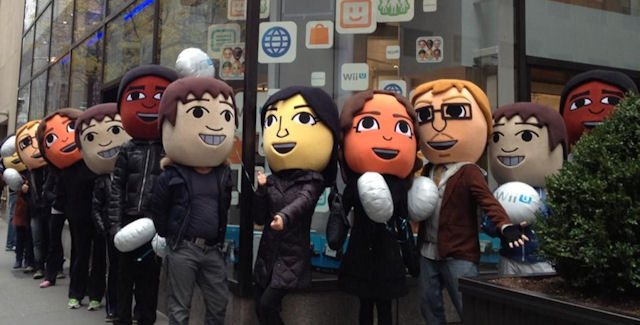
What Happens NX?
It’s a fairly safe bet to estimate that the NX will be released in time for Christmas 2016, with America perhaps seeing it mid-November while Japan and Europe get it in early December as we did for the Wii and Wii U. Given the shrinking home console market is more pronounced in Japan it would be interesting to see if Nintendo focused more on the North American and European markets as they did with the Wii U. Nintendo has a lot of Japanese fans, but the general market itself just is not buying home consoles like it used to and their efforts may be better spent in other territories.
Speculating about price is difficult given how little we know about the console. The Wii’s low price obviously helped it gain momentum and people have argued that the Wii U’s price did not help the console. Presuming the NX is indeed the home console (as Nintendo still has not explicitly stated it is), arguably the NX’s price should be somewhere in between that, but then we don’t know what is happening under the hood and whether that would be practical. The Wii's low price was in part afforded because of the console's inner-workings and the GamePad will undoubtedly have added to the cost of the Wii U, so until we know what the NX contains we can but guess. The success of the PS4 shows that the price itself is not a huge concern (as it cost more than the Wii U) as the perceived value and as such we’ll have to wait and see what the NX is like before we start trying to put a price tag on it.
An interesting, and until recently unexpected, factor in the NX launch is the very real possibility of upgraded consoles from Sony and Microsoft. Rumours have been circulating for some time now that Sony will release an upgraded console with the codename Neo (although commonly being called PS4K) that will offer improved specifications with some guidelines for developers such as no-exclusive features etc. There have also been rumblings that Microsoft is considering the same, although the rumours are not as pronounced at the moment. Obviously there’s little we can do with rumours, but it will be interesting to see if we end up in a position where at the end of the year the market has one new console (NX) and two updated consoles, especially if the specifications and prices are similar to each other. Would that fare better for Nintendo as shoppers see it as a new console rather than an upgrade? It might well do, although it requires Nintendo to make it clear to everyone it is a new console.
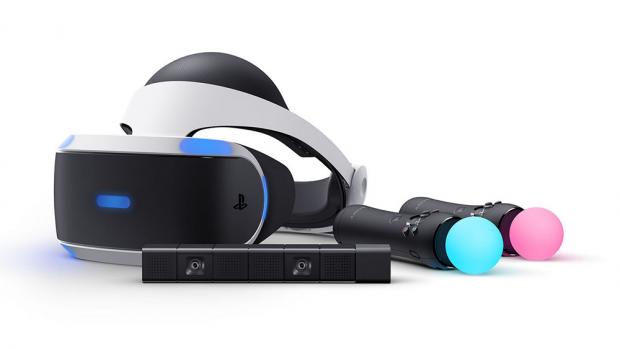 In addition to these, we do know that Sony is releasing the PSVR later in the year. Several PC or mobile-based Virtual Reality devices are either currently available or will be soon, but Sony’s is the first that is designed to work with an existing console. Due in October, the PSVR will cost £350 and Sony has stated that there will be 50 games out by the end of the year. This could very well see it release near the NX and for a similar price (although unless the NX is more expensive than the Wii U, it’s likely the NX will be cheaper than the PSVR and you obviously need a PS4 in the first place too).
In addition to these, we do know that Sony is releasing the PSVR later in the year. Several PC or mobile-based Virtual Reality devices are either currently available or will be soon, but Sony’s is the first that is designed to work with an existing console. Due in October, the PSVR will cost £350 and Sony has stated that there will be 50 games out by the end of the year. This could very well see it release near the NX and for a similar price (although unless the NX is more expensive than the Wii U, it’s likely the NX will be cheaper than the PSVR and you obviously need a PS4 in the first place too).
Thankfully we have moved away from the days of a console launching with three titles, with recent consoles getting ten times that. What should we expect from the NX? Early rumours suggest The Legend of Zelda is going to be on Wii U and NX and several Wii U titles will be ported over (Mario Maker and Splatoon have been suggested amongst others). That will certainly provide a healthy launch range by Nintendo alone, providing you don’t already own the Wii U games. Hopefully there will be at least two or three NX-developed titles from Nintendo that showcase whatever the machine will end up being capable of and third parties will fill out the rest of the launch line-up.
Undoubtedly we’ll see titles from Ubisoft and EA because they rarely miss a console launch and although EA has pretty much abandoned the Wii U, it would be surprising if they did not at least try with the NX. As discussed in both the third parties and controller instalments, and as will be expanded later, factors such as the ease of development and porting will play a large part. If EA can easily port their sports titles they are likely to do so at launch, particularly if it is late in the year when the new annual instalments come out. Otherwise we might get the bare minimum (i.e. FIFA in Europe and Madden in America) or stripped down ports.
Hopefully Nintendo has learnt their lesson from the Wii U when it comes to marketing. It remains to be seen if the Wii branding will continue, but if it does they need to make it painstakingly clear to the general public it is a brand new console and not an add on. Again the ultimate form factor, name and controller will play a large part in how the advertising is handled and whether they continue with the family gathering theme they have used for the Wii and Wii U, or focus more on gamers as Microsoft and Sony have done. The three current console's slogans say all you need to know about the consoles themselves; Wii U's "How will U play next?", Xbox One's "the all-in-one entertainment machine" and PS4's "4 the players". It will be interesting to see if Nintendo keeps with its current course of focusing on the interactivity element or will focus on the gaming side as Sony has done.
If Nintendo can release a console with several new titles, several ports/remasters and a healthy third party support it will certainly put them in a good position. If the console has a good price, or a good perceived value, they could very well make the NX launch their best one yet. We'll have to see what tricks Nintendo has up its sleeve!






















